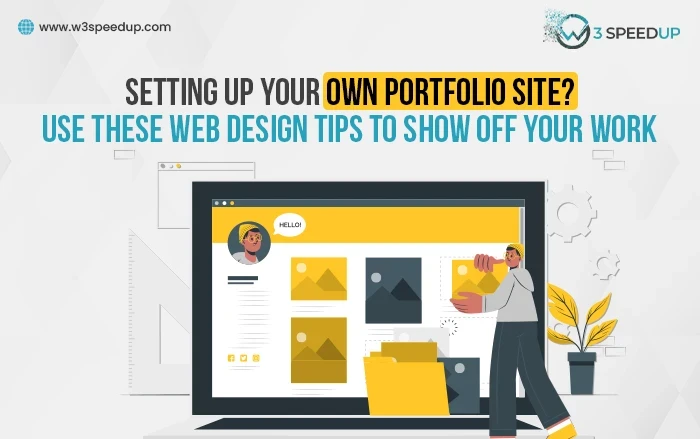A striking portfolio website is one of the most powerful assets in the toolbox of many professionals across a variety of diverse industries. Demonstrating the strength of your work all in one online location makes reaching out to potential clients and discovering new connections much easier. If you have a body of work that you are proud of and ready to display for the purposes of seeking further commissions, a portfolio site is crucial. Below, you will find several valuable tips to help you design a website that promises to capture your visitors’ attention and earn you more opportunities.
Who Needs a Portfolio Website?
A range of professions benefit from maintaining an online portfolio to showcase their work. Depending on your specific industry, you may be more familiar with some of these than others. For example, many people in the creative field, especially freelancers, use portfolio sites to store their work, whether that’s graphic design, illustration, product design, or writing.
Software developers, web designers, architects, engineers, and many other technical professionals also use online portfolios to store their best work. Having this single online space allows people to point potential interest in a specific direction where their work can speak for itself.
Deciding Which Platform to Use
First, you will need to choose a platform for your portfolio site. You can build a website from scratch if you have the skills and confidence, or you could turn to one of the many customizable website creators available online. Each has its advantages and disadvantages, such as price, capabilities, and ease of use. Here are a few of the most popular website creators you can choose from:
- Wix
- Squarespace
- Shopify
- GoDaddy
Each website creator has varying levels of customization and storage as well as different templates. Of course, there are plenty of other website builders out there that might suit your needs better. You must explore all your options before signing up.
Take Steps to Improve Your Site’s Accessibility
Failing to consider accessibility when building your portfolio site excludes potential connections or customers from engaging with your work. Web accessibility is a wide-ranging concern that involves making the internet a fairer place, where people of all abilities can access and create online content.
An accessible portfolio site opens you up to more potential clients as well as demonstrates that extra level of care for your brand. Even if you aren’t a confident web designer, you can use software to help make your site more accessible. Reading Userway reviews will enlighten you with the possibilities of accessibility tools and widgets to improve specific features such as legibility or navigation, highlighting areas for improvement and offering solutions. This type of tool is simple to install and significantly enhances your website.
Create an Impactful Homepage
Your homepage is what visitors will see first, and therefore, it must be instantly captivating. Some professionals prioritize immediately putting their best work front and center on the homepage so that no navigation is required to discover it. Others might prefer to introduce themselves and their brand before leading into the work. There is no single correct route to take when designing your homepage, but there are a few key principles. These are:
- Prioritize consistency with your visual branding, even if it is simple and pared-back;
- Use something visual and impactful to instantly capture the visitor’s eye;
- Offer relevant and well-labeled links to other pages, such as work categorized by project or date.
If your portfolio site’s homepage doesn’t inspire your target audience to stick around and explore your work, you will lose out on opportunities.
Keep Navigation Simple
Getting around your portfolio site shouldn’t feel like navigating a maze. Links must be clearly labeled and lead to what they promise. For example, if your website creator template has an automatic ‘About Me’ section, populate it with relevant content or delete the link. Navigation should feel effortless and smooth. Spend time on your site before it goes live to discover firsthand the possible points of friction that might trip up your visitors, then go back and fix them.
How Will Interested Visitors Get In Touch?
A captivating homepage with impressive work isn’t all your portfolio site needs. If you want people to contact you about possible commissions or collaborations, you must include up-to-date contact information such as your email address and social media handles. Keeping a connected online presence is invaluable as a freelance professional from any industry.
Neglecting your portfolio site can be hugely detrimental to your work overall. Without a fresh, compelling, accessible website, you are missing out on reaching the people and businesses who want to work with you. Using the above web design tips, you will be better equipped to build a site that seamlessly displays your proficiency and encourages visitors to engage with what you have to offer, ultimately boosting you and your business.



